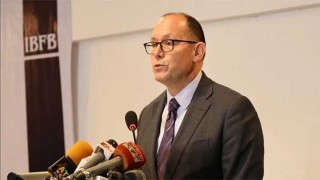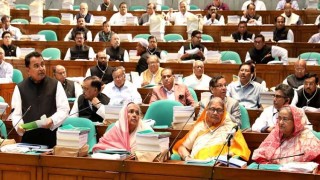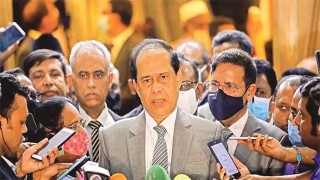Bangladesh’s forex reserves fall below $30bn
09 May 2023, 09:26 am | Updated: 26 April 2025, 09:27 pm

The foreign currency reserves of Bangladesh fell below $30 billion on Monday, after transferring payment of $1.18 billion in liabilities to the Asian Clearing Union - a payment arrangement between the central banks of a number of Asian countries. Payments are made at two-monthly intervals.
The country's reserve figure thus stood at $29.8 billion on Monday, down from the $30.98 billion it started the day with.
It should be noted however, that the Bangladesh Bank at present chooses an archaic calculation - finally getting discarded - of reserves that hinges on both 'encumbered' and 'unencumbered' reserves counting towards the final figure.
However, counting encumbered reserves - e.g. where money may have been taken out of the reserves and given as loans at less than commercial interest rates, or moneys given as loans that were later defaulted, or even rescheduled - as part of the overall figure is frowned upon, and wrong.
In 2021, the IMF sounded out for the first time that it had identified a sum of around $8 billion in the Bangladesh Bank's books that should be viewed as 'encumbered', and left out of the reserve calculation.
The bulk of the $8 billion is bound up in the Export Development Fund - in fact close to $7 billion. There is a large loan, denominated in Euros- 525 million Euros - to the Payra Port Authority. And the $200 million in a currency swap with Sri Lanka, which obviously is in no position to pay it back yet.
Almost every economist agrees with the following principle in reserve calculation: "What cannot be spent should not be counted."
It is in line with this principle that $8 billion should be subtracted from Bangladesh Bank's official figure, in order to arrive at a true estimation of where the reserves stand.
The good news is that the government, or rather Bangladesh Bank, has finally come around to this suggestion in their dealings with the IMF, and on Sunday it was announced that with the announcement of its next half-yearly Monetary Policy Statement, which would be on July 1, Shapla Chottor too will be reverting to the IMF's suggested method for reserve calculation.
Meanwhile the forex reserves are somewhat stressed again, as the flow of inward remittances and export earnings show a decreasing trend.
According to the central bank's data, the last time the reserves were moving around the $30 billion mark was in 2015-16, when in June, 2016 it was $30.35 billion. So going by that, the official figure dipped to that level after almost 7 years.
But actually it was in September 2022, some 8 months ago, that the reserves dipped below $30 billion, calculated rightly. On September 8, 2022 a payment of $1.73 billion to the ACU brought the official reserve figure down from $38.94 billion to $37.06 billion. If you subtract the encumbered $8 billion, that is the day the real reserve figure dropped below $30 billion.
After today, rounded off, we can say the reserve figure is $22 billion. From April 2022 to today, the reserves have shrunk by a whopping $14 billion, on the back of increased demand for imported goods, but really most damagingly, in transitioning from depending on your own resources for energy, to becoming an importer of energy.






















